Baranof Blog & Fishing News
- Home
- Baranof News Blog
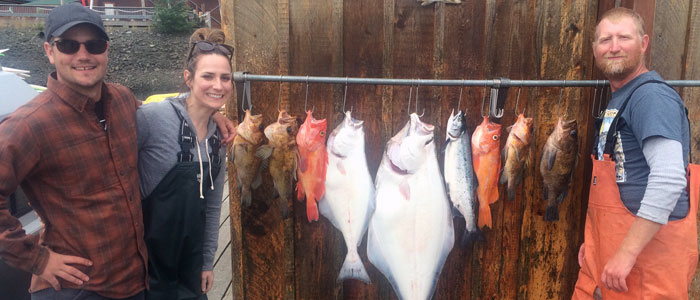
By Greg Slagle
One day, my father Chuck Slagle looked at what his brother was doing for fun and said to himself, “I bet people would pay to do that…”. Over 15 years later, the concept holds true; fresh fish on a Southeast Alaska beach is a wonderful family experience. Dedicated to providing authentic Alaskan adventures, Baranof is a family company in many ways; our employees regularly borrow a boat for salmon and halibut fishing in Ketchikan with visiting relatives, we’ve designed all our excursions to be enjoyed by anyone from 5 to 85 years old, and we’re a family company in the sense that we were founded by two brothers – AJ and Chuck Slagle. With a young son of his own, and his brother’s grandkids making regular calls, AJ is constantly surrounded by his family. Always happy to take the time to teach us knots, how to fillet a fish, and the proper method of reciting a Robert Service poem, uncle AJ continues to show the younger generations of Slagles how to enjoy Alaska to the fullest. Alaska is about experiences; who better for our children to learn from than the man that has done it all?
For more stories about AJ and the Alaskan experience, visit his Facebook page at https://www.facebook.com/search/top/?q=alfred%20slagle%20jr. and our Alaskan Anecdotes page at https://exclusivealaska.com/alaskan-anecdotes.
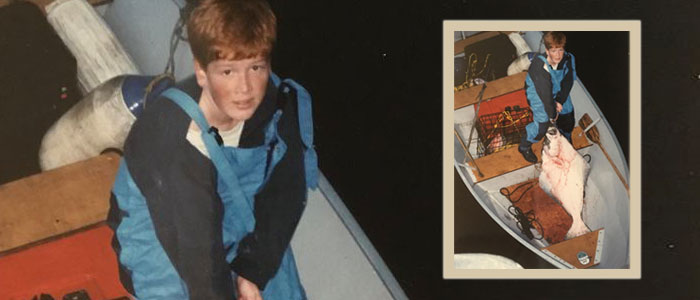
By Greg Slagle
AJ knows every nook and cranny of the area surrounding Ketchikan. His boat handling skills are renowned, as he has traveled most of Southeast Alaska in small skiffs during his trapping, fishing and hunting adventures. Out of all of Baranof’s guides, AJ probably has the most eclectic and interesting stories of outdoor living in Alaska: he has guided on the Nushagak River in the Bristol Bay drainage hunting caribou and moose; chased mountain goats and Sitka black tail deer through the hillsides in Southeast Alaska; led brown bear hunters through the wilderness of the Misty Fjords National Monument; and caught halibut and king salmon off the coast of Prince of Wales Island. For a time, AJ ran a large fishing live-aboard called the Shamrock. He’d take clients out for multi-day salmon and halibut fishing charters in the Ketchikan area. On one such trip, when I was about ten, I was allowed to join him as a deck-hand. This was an absolutely amazing experience for me as a child, part of which AJ chronicled on his Facebook account recently after coming across an old photo:
"Hey AJ, Greg's got something big on up on the bow" the client said to me as I was cooking dinner for everyone. I had him watch the meal cook while I went and checked it out. When I hefted the rod after arriving there I said "Greg, go back to the stern and I will hand it down to you, and grab my pistol as you go by." He raced belowdeck yelling as he ran "oh boy!,I got one big enough to shoot!" It went well. Greg did exactly as I asked and brought the fifty-pound halibut to the surface and I shot it before bringing it into the skiff we had tied off. It was a great moment to see his joy and wonder at what he had caught. I wish I could have brought my young nephews and nieces on more of those excursions, but I am glad Greg got to come along on that one. That halibut is one I won't forget...
…and neither will I. Our father made sure that my brother and I spent as much time with AJ working, fishing, and hunting as we could while growing up, and he taught us a great many things; the most important of which is our love and respect for the Alaskan outdoors.
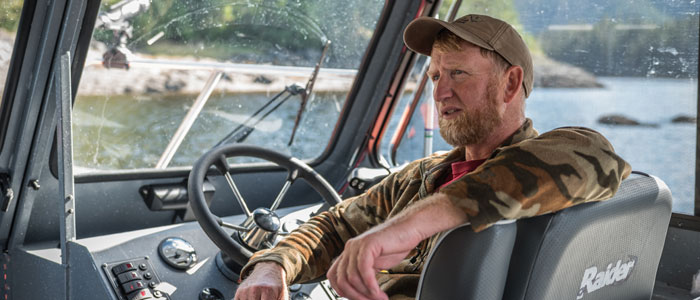
By Greg Slagle
In August of 2017, I took a trip back to Ketchikan with my middle child and oldest son, Charlie. During our visit, we had the opportunity to join my uncle AJ for a day out on the water in Baranof’s newest Raider cabin cruiser, the 30 ft. Alyssa. Ready to do some halibut and salmon fishing anywhere near Ketchikan that AJ wanted to go, he opted to run us down to his old stomping grounds near where he used to fish for Mink Bay Lodge. My son thought the day was about fishing. While he was technically correct, my goal for the day was to provide him with the rare experience of spending time in the Alaskan wilderness with a true master outdoorsman.
A born-and-raised Alaskan, AJ spent his formative years hunting, fishing, and trapping from his family’s home, a floating logging camp located northwest of Ketchikan in Neets Bay. If a biographer were to write about AJ’s experience in the Alaskan outdoors, I can assure you it would most likely be to the tune of been there, done that. While many people talk about a desire to live comfortably by themselves in the wilderness, few really enjoy their own company enough to do so; AJ is one of the rare outdoorsmen that could spend three weeks solo in the woods, and not get lonely.

Visitors to Ketchikan, and the rest of Alaska, are sometimes surprised to find we use American currency. While we do live a life disconnected from the “Lower 48s”, we’ve been a part of the U.S. of A. for a long while now. In an effort to solidify Alaska’s inclusion in this great country of ours, we at the Alaska Fish House have decided to spotlight our most popular dish; Fish & Chips. Sure, the combination of fried fish and fried potatoes is over a hundred years old and one of a multitude of things we “borrowed” from our British cousins, but nobody deep-fries like we do. From okra to butter, anything a patriot has been able to get batter to cling to has been boiled in oil and chewed off a stick. Thumbing our noses at the tyranny of the pervasive medical propaganda, much like our forefathers did toward taxation without representation, the Alaska Fish House is proud to prove its unwavering national pride by wrapping Alaska’s freshest fish in two layers of bread and dunking it in molten peanut extract.
All kidding aside, we’re not as gung-ho about deep-frying as we pretend. Fresh Alaska seafood, especially salmon, is rich in natural flavor. Rather than covering it up with a lot of seasoning, ingredients that accent the flavor of the meat are our preferred method of preparation. Our menu is replete with options with an eye toward natural, healthy flavors such as our steamed crab or blackened halibut tacos. Whether you’re in the mood for something savory, healthy, or a little of both, the Alaska Fish House is here to satisfy.
To view, more recipes from the Alaska Fish House go here
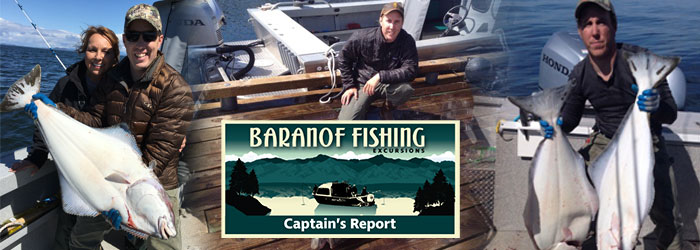
This has been an interesting year for anyone trying to follow the upcoming changes to charter halibut limits for 2018. The International Pacific Halibut Commission (IPHC) has been uncharacteristically deadlocked in determining halibut size limits for the 2018 fishing season.
In February, a 35-80 inch slot was proposed to keep the numbers within a sustainable range. Halibut over 35” would need to be released. While the sustainability of the fishery is of utmost concern for most fishermen, this cut in size limit would hurt, as lots of the halibut we catch fall within that size range. Fortunately, as of now, the commission has decided on a 38-80 inch slot for 2018, giving Ketchikan charter fishermen an additional three inches.
A three-inch difference might not seem like a lot (it equates to about a 5-pound difference in weight), but it is a big deal. Our average halibut length is around 35”, and a large percentage of halibut we catch fall within the 35”-38” range. If we couldn’t keep fish in this size range, a lot of halibut would be going back this year. This slot limit applies to guided sport halibut charters in area 2C, which is anyone fishing for halibut in Southeast Alaska and includes the Ketchikan area.
Sometimes stricter regulations tick me off; but when that happens, I need to take a step back and look at the big picture. If we don’t protect these fish, they’re not going to be around.
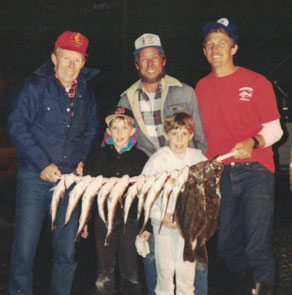
wearing the sweatpants (It was the 90’s).
Halibut have a special place in my heart. My family fished halibut before I was born and some of my earliest memories involved halibut fishing. My first time fishing halibut, my dad, my two uncles, my twin brother and I went halibut fishing out of Marina Delray in Southern California. We were fishing offshore, and though my parents tell me I was conceived on a boat in the same area, it was the first time I can remember being on the ocean. Right from the start, we had a hard time getting our lines to the bottom because a large school of mackerel was ferociously taking the bait on the way down. My brother and I were having a ball catching the little mackeral, but the older generation of fishermen were getting irritated. At one point, I remember my normally mild-mannered dad cursing a mackerel as he smacked it against the side of the boat. My brother and I were overjoyed at the non-stop action; we were catching fish, why was everyone else upset?
This went on for a few hours before we attracted the attention of a giant sea-lion who had learned to follow boats around looking for an easy meal. When the bugger grabbed a mackerel I had pulled out of the school, I had no idea what was happening, I just knew that something tremendous was pulling all my line off the reel. My uncle, knowing right away that I was on my way to getting spooled, immediately cut the line with a knife. They had to explain it to me, I didn’t know what happened.
Later on, amongst the maceral onslaught, I was reeling in another fish and the thing started aggressively pulling line off the reel. I started screaming “Cut the line! Cut the line!”. My Uncle Dave replied, “Screw you.” I was bewildered by the situation, but I started slowly gaining on whatever it was. After what seemed like a very long time, I saw an unusual fish coming up out of the emerald green deep. At that point, I knew it wasn’t another sea lion, and I was amazed when my uncle savagely gaffed it and plopped it on the deck. Everyone but me cheered. So that’s a halibut? I realized that up to that point, I didn’t even know what the heck we were fishing for. I was happy with the mackerel, but this halibut was incredible to me.
We finished the day catching a hundred or so mackerel and a nice pile of sea bass; I caught one more halibut. This time, I knew what it was as it took its first dive and started pulling drag; and I was beside myself with excitement. At the end of the day my brother may have been a little upset that I caught the two halibut of the day and hooked the only sea-lion, but I remember how proud my dad was. When we got the boat cleaned and put away, the entire family met at my grandma's where we celebrated the successful day by frying up our fresh fish.
This was my first experience halibut fishing, my first time hearing my dad swear, and the first time anyone ever said “screw you” to me. It was a monumental day of firsts, and halibut fishing has been in my blood ever since. Twenty-five years later, I still vividly remember the mackerel, the halibut, and the sea-lion; but most importantly, I remember the wonderful time we had as a family. My dad has since passed away, and my uncle has since sold his boat and moved to Arizona; but while life is constantly changing, memories like this always stay with you. For me, this encapsulates the true essence of fishing.
I hope to one day create these types of memories for my children, and it’s our regulations that keep me optimistic. Pacific halibut are fortunate that fishermen have learned from past failures and are applying their knowledge to protecting the halibut population. While there are three distinct species of halibut, (Atlantic, Pacific, and California) only the California and Pacific halibut have steady numbers. Atlantic halibut haven’t been so fortunate. Atlantic halibut are found on both sides of the Atlantic from Virginia to the United Kingdom, but are considered an endangered species due to hundreds of years of unregulated fishing; lessons learned at the expense of this species are being applied to West Coast fisheries, which have made organizations like the IPHC possible.
The International Pacific Halibut Commission (IPHC) is responsible for protecting Pacific halibut from Southern California all the way to the tip of the Aleutian Islands including; Alaska, British Columbia, Washington, Oregon, and California. This is a huge area, but it is only part of the tremendous range of the Pacific halibut. They range down the coast of Russia to the coasts of Japan. While the IPHC doesn’t include Russia or Japan at this point, it does ensure all of the fishing regulations throughout northern America work together to protect the resource. The IPHC is an international treaty amongst Canada and the US making halibut one of the few federally regulated fish in our area.
It’s no surprise to me that outdoorsmen are usually ardent conservationists; we love the wild, and most are fascinated by the vast intricacies of its inner workings. From its lifecycles to the incomprehensible food webs, the wildness of the ocean is something we can touch, feel, and eat. Nevertheless, regulations sometimes feel like a double-edged sword; while they do limit something we love, they also ensure the future of this passion for future generations.
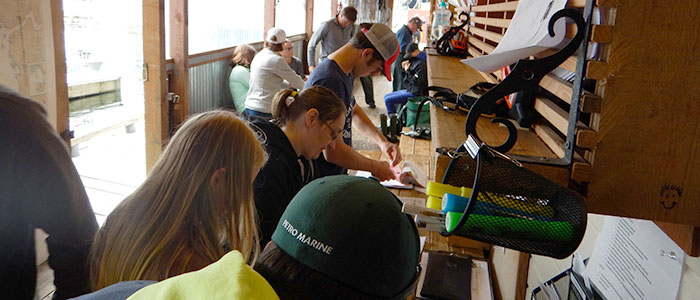
Preparing folks for a day fishing around Ketchikan means adding layers and getting licensed. Bonnie and her crew, along with the guides, do an excellent job of outfitting our guests with everything they need for a day of fishing for salmon and halibut in Ketchikan. Raingear, boots, hats, gloves, socks, dry bag, and life preservers are fitted for each client’s comfort by their guide while the state of Alaska fishing license is filled out for each guest by Bonnie’s team. Nobody goes fishing without a license, so until everyone is legal, Bonnie is in charge; you’ll often see our owner, Chuck, with license book in hand scribbling furiously to avoid Bonnie’s wrath. Once all the boats have left the dock, Bonnie gets to relax in the office settling billing accounts for about 100 guests before the cruise ships leave port. Once the passengers are back on board, she checks the next days counts and starts the whole process over again. Baranof takes thousands of guests fishing in Ketchikan, Alaska during a season, and we couldn’t do it without Bonnie Steinberg.
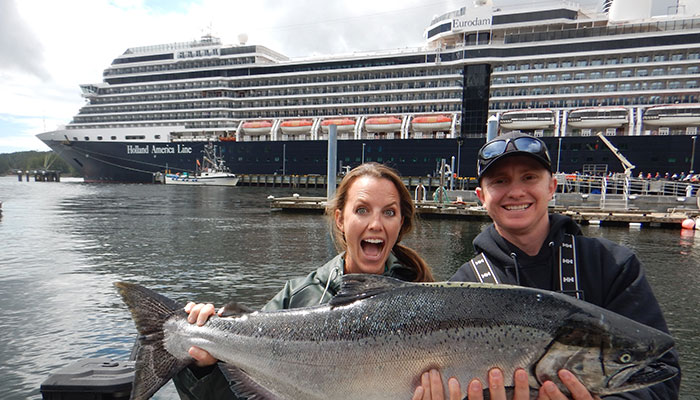
Ketchikan regularly gets up to ten thousand visitors off the cruise ships in a day. Many of them book tours and excursions through the ship, which means the tour operators pick them up on the pier to transport them to their company’s location. That being the case, the cruise ship pier can get pretty hectic at times. Baranof Skiff Excursion’s guests are usually some of the first to disembark, as our salmon, halibut, and culinary fishing excursions here in Ketchikan typically run the duration of our clients’ stay in town. Bonnie makes sure everyone gets where they need to be at the right time. Depending on a world of factors such as departure time, specific excursion, mobility considerations, and weather, Bonnie must coordinate pick-ups and drop-offs for all our guests throughout the day. With a dedicated crew of dock reps at her disposal, and the option of putting our fishing captains to some actual work, she sends forth her minions to guide our clients to and from our marina.
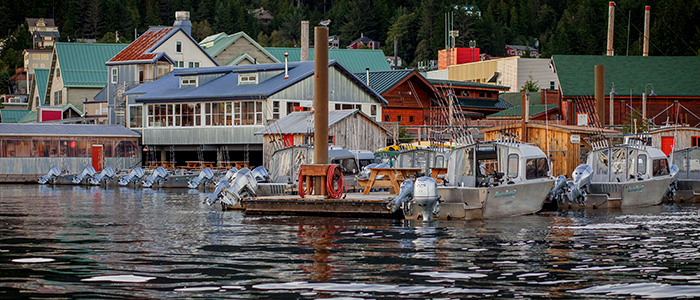
A typical day for the office crew at Baranof starts late the night before. We allocate a certain number of seats for salmon, halibut, and our culinary fishing excursions to each cruise ship that will call in Ketchikan on a given day. Based off how many cruise ships will be visiting, the size of the ships, time of year, our relationship with each ship’s sales staff and their previous sales, and a magic 8-ball, we determine an expected number of guests from each. While the number for a specific ship is rarely exactly what we predict, when taken as an average we are very close at predicting a passenger load for each day. Typically, however, we don’t receive those numbers until the end of preceding workday, which is when Bonnie starts working her magic. Organizing our 20 odd boats, with 4-6 passengers on each, over three unique Ketchikan fishing excursions (let alone the customized private charters), while keeping family’s and parties together is an impressive feat accomplished by Bonnie and her crew. Once the plan for the next day is set, they’re ready to hit the ground running in the morning as soon as the cruise ships hit the pier.
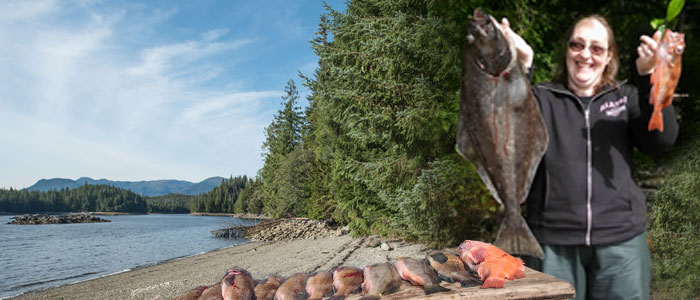
Most industries have a lot going on behind the scenes to get a product to the client, and tourism is no different. While there are the standard support teams such as accounting and HR, businesses like Baranof Fishing Excursions deal with a unique set of concerns. It takes a special kind of person to run the shoreside end of an operation such as ours. Good office managers for Ketchikan fishing companies require logistical skills, good situational awareness, calm under pressure, and the ability to work five months on a truncated sleep schedule. Bonnie Steinberg is our gal. Defined by her ability to stay focused and not lose her cool amidst the chaos, she exhibits the same control and care you might remember from your preschool teacher. Baranof is proud to have her, so we’d like to give you an idea of what her summers look like on a day to day basis.
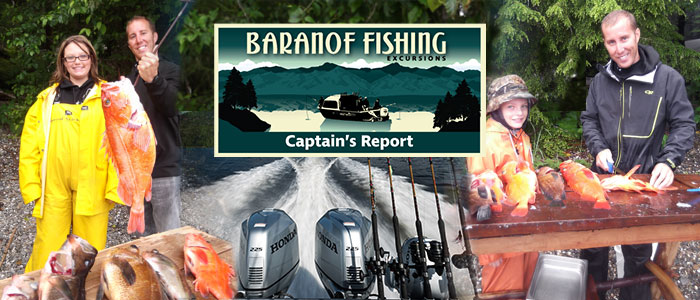
The winter of 2017 was the first winter I lived in Alaska. A California transplant, I’d been fishing in Ketchikan for the last 6 years, but I always drove up in the spring and drove down south in the fall. 2017 was our first winter away from California, and I dragged my wife up not really knowing what to expect in this place. A few weeks after the cruise ships stopped coming, and the downtown hustle and bustle slowed down to a crawl, I was amazed at how quickly and by how much this place grew on us. The warm people, the wonderfully beautiful days mixed with the violent storms, the crisp clarity after a snowstorm, and the way the community comes together in winter was like nothing we’ve ever experienced in the lower 48.
Even though my wife and I had a special winter together, springtime felt like a bit of an accomplishment. Before we stayed our first winter, my wife and I often heard “good luck surviving the winters...” but after a while, we realized that most of the people saying this have never stayed a winter in Ketchikan; and while many Ketchikan residents do complain about the weather from time to time, from my experience most wouldn’t have it any other way. This place is truly special and seeing the seasons' full circle made me love it more. We are in the middle of our second winter, and it still seems that the longer we live here, the more we love this place.
Needless to say, I am a fisherman, so when spring came around that first year I was chomping at the bit to get back on the water. Our first boat got put in towards the end of April, and that same day I grabbed my friend Tony and my ultra-light rods and went out. We were targeting rockfish so we didn’t have to go far. About half a mile from our dock, we started catching fish pretty quickly. Tony caught a copper almost immediately, and I pulled up a nice little quillback a few minutes later, completing our limit of non-pelagic rockfish. It was fun nailing a couple rockfish that quickly, but we were a little bummed it happened so fast. Non-pelagic rockfish live their entire lives down at the bottom and pulling them up to the surface rapidly cannot be a pleasant experience for them. Because of this, we didn’t want to keep catching non-pelagic rockfish if we were going to release them, so we went looking for pelagic. Pelagic rockfish are migratory in nature, and they can be found anywhere from the top of the water column down to the bottom. In fact, many times part of the school will follow the hooked fish right up to the surface, and you can see them swimming right under the boat. Sometimes leaving a hooked fish down 10-15 feet under the surface will keep the school close to the surface as they school with the hooked fish.
Tony and I didn’t have to go far to find pelagics. About a quarter mile away, we parked the boat over a large school of duskies. We were dropping 1oz. metal jigs sometimes called jigging spoons, or flutter jigs, where you use the tip of the rod to flip the lure up and down sporadically imitating a wounded baitfish. These metal jigs can be like candy for the little buggers! Fish bite the lure as it flutters down. The next time you raise the tip, the hook gets buried, and you’ve got a little fight on your hands. The pelagic duskies were hungry that evening, we caught 10, limiting out in around 20 minutes. I would chuckle, and Tony would have a big grin on his face every time we hooked up; we were having fun.
A day or two later, Chuck, Baranof’s owner, wanted to impress some friends with a meal in the Fish House. When it comes to impressing people, it’s hard to beat fresh rockfish, so I took him and his wife to my secret rockfish spot (It’s under a mile from the dock; everybody in the company knows about it at this point.). That school of duskies was still sitting on that same ledge; and using my ultra-light setups, we soon had enough to make some of the best ceviche I’ve ever had. Now, of course, saltwater fishing in Alaska is not always this successful, but the great thing about rockfish is that it often is. Chuck was so impressed by ultra-light fishing, it was easy for me to convince him that it’s a skill set we should have on our dock. I am happy to say that this winter I am working on incorporating ultra-light fishing into our fishing program. If you have any interest in giving ultra-light fishing in Ketchikan a try, please contact us ahead of time, and we can match you with a guide passionate about ultra-light fishing.
Rockfish are certainly not the biggest or the hardest fighting fish in Alaska, and they actually have somewhat of a bad reputation among local fishermen, but that’s ok with me. I feel that catching them on an ultra-light set up is one of the best-kept secrets of fishing in Alaska. Much of the bad rep comes from the fact that most fishermen in Alaska catch rockfish incidentally when targeting halibut, and they do so from 300 feet on stout halibut rods designed to lift lots of weight off the bottom. Where’s the fun in that?
What made these fishing trips so much fun was the ultra-light rods. Rockfish are similar in size to largemouth bass, and while people are fanatic about bass fishing, part of the reason is because 8 lb. test line and light duty rods are common. This enables them to feel the strength of the fish. I don’t think they’d enjoy catching bass that much if all they had was a halibut “broomstick” fishing rod, 100 lb. test line, and 32 oz. of weight.
I have found that targeting rockfish using small 1-3oz. metal jigs and sizing down the rod and fishing line, make catching rockfish a kick in the pants. Metal jigs are also fun to use because most predators in the ocean love them, and you never know what you’re going to catch. If you want a real challenge, try catching a halibut with an ultra-light setup. The little rod makes an average 20 lb. halibut seem like a beast, and they make long screaming runs with the comparatively light drag.
I have caught and I have had clients catch trophy size lingcod, halibut, and kings on an ultra-light. Chasing these serious fish on a light setup really requires the guide and the fisherman to be on the top of their game. If the drag is too tight, if there is a nick in the line, or if the fisherman tries to horse the fish in by rushing it, bad things are likely to happen. But at the same time, there really is no excuse for losing a large fish with an ultra-light setup, and I have caught halibut in the 100lbs. class with an ultra-light rod. You do need to slow down and play a fish this powerful though. You can’t just reel and reel and reel.
This year, when the winter is over, and the first boat is back in the water, I’m sure I will again feel the call of the ocean and especially the fish in it. I can already feel the joy of wrestling with that first rockfish on my ultra-light and tasting it after it’s been filleted and freshly cooked, and I’m excited that I can now share this passion with our guests. I can’t wait for the season to begin.

Last season, Jeff Kraynik was one of two captains guiding the Lee family on their Baranof fishing trip in Ketchikan. Jeff does a wonderful job of chronicling his adventures on Facebook, so we’ve just pulled that story straight from his page to share with you here:
Today, Baranof Skiff Excursions hosted (4) generations of the Lee family from Texas, New York & California.
It was a day of 1st for me, (4) of them actually!!!
1) I had the youngest client ever on my boat at (9) months old
2) I had the oldest client ever on my boat at (93) years old
3) I had (4) generations of family on my boat
4) I got to run the bosses boat, "Rosie"
Enough about me!!!
The Lee family chartered (2) hardtops for an afternoon of fishing then lunch at camp. The weather was bearable, then the wind picked up which forced us up Carol Inlet to hide behind the mountains.
On the first drop, Linh Lee hooked up as soon as her bait hit the bottom. The rod doubled over to the water and the fight was on.
Halibut!!!
Nope, it was a dang shark. Great fight but after pics back over it went.
We worked our way back out of the inlet to California Point and started mooching for rockfish.
(10) drops produced (9) rockfish to include coppers, Dusky's & Red Stripes. Capt Jack Finnegan's crew boated Quillback's and a Flounder.
The weather began to deteriorate pretty rapidly so with "precious cargo" onboard, we elected to skip camp and head back to the restaurant for lunch.
After cleaning our catch, the boss Chuck Slagle & Dockmaster Dennis Metzger got the clients squared away and seated for lunch. Baked rockfish, fries, cole slaw and a filet of salmon that the chef threw in for good measure was had by all.
I love this place!!!
Just one of many, this story does an excellent job of conveying Jeff’s love of the outdoors, as well as his passion for sharing the experiences he values so highly with his guests. To read more, follow Jeff on Facebook at Jeffrey Allen Kraynik, or visit his website at www.coastalsportsmen.com.
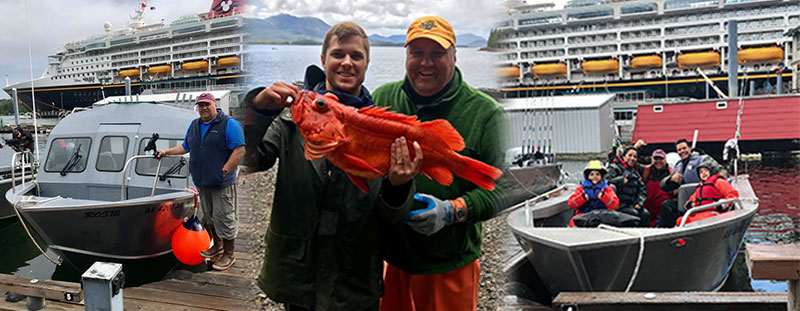
Jeff spent thirty years of his life in a career as a law enforcement officer. If you’re lucky enough to get out on the water with him, you’ll see his attention to detail from years on the police force translates directly to his skill as a fisherman. He embodies the word professionalism.
Jeff got hooked on fishing with his grandfather and father as a young boy, reeling in perch and walleye in Puti-In Bay on Lake Erie at his grandfather’s cottage. He’s also spent extensive time fishing for grouper, snapper, wahoo, and dolphin fish in Florida, which gave him a knack for bottom fishing. The bottom fishing skills that Jeff honed in Florida are readily apparent in Alaska. Jeff is consistently one of our top producing guides for our fishing guests. While salmon fishing and bottom fishing are areas that Jeff excels in constantly, his defining features, in Baranof’s view, are his professionalism and passion for instructing children out for their first fishing trip in Ketchikan.
If you have children who are new to fishing, Jeff would be your guide! One of his favorite excursions is one where he gets to introduce a kid to the raw beauty of Southeast Alaska on their very first fishing adventure. Importantly, he doesn’t ask the kids who go out with him to behave as adults; rather, he’ll quickly be joining the kids in seeing the world from their perspective. And, as a true professional, he’s versatile and adaptable. While you may find him wearing funny hats and joking around with the kids, we can assure you he’ll also simultaneously bring in the catch with expertise and finesse.

Happy New Year from Baranof and Company! We hope this letter finds you well and that you and your family enjoy a great New Year!
The 2017 season was another remarkable season for us here at Baranof, with lots of fish caught and many friends made. As I sit here in the middle of winter, I get a get a twinge of excitement whenever I think of the coming spring and the chance to get back on the water doing what I love!
As I think these happy thoughts, I have also become aware of some big changes in the fishing regulations here in Southeast Alaska for the 2018 fishing season. I thought I would share the changes, so you would know what to expect if you decide to book a fishing excursion here in Southeast Alaska for 2018.
The changes mainly affect halibut and king salmon fishing. Rockfish, silvers and pink salmon, lingcod, and yelloweye rockfish are not affected by the changes, so you can expect to catch them with all the enthusiasm of the past fishing season.
The halibut regulations are being changed in a big way in 2018, with the maximum keeping size being about 20 pounds. The king salmon forecast on the entire Pacific Coast is bleak, and the industry is bracing for what could be some very restrictive king salmon regulations coming for 2018. If you are interested in specifics on these two species, I’ve included more details below.
New Halibut Regulations
The International Pacific Halibut Commission uses a reverse slot limit to regulate the catch rate of halibut. A reverse slot means fish of certain sizes cannot be retained. In years past, the slot limit has bounced between 42”-80” and 44”-80.” IPHC has set the 2018 slot to 35”-80.” What does this mean for us? Well, it means that every Halibut between 35” and 80” will need to be released. Worth mentioning is that while sports fishermen will be allowed to keep halibut over 80”, or around 275 lbs., fish this size are extremely rare in the Southeast - you’ll probably end up on the front page of the local newspaper if you catch one. So, for the 2018 fishing season, expect to fish for halibut under 35 inches.
These halibut regulations extend from Ketchikan all the way up to Glacier Bay and include Juneau, Sitka, and Icy Point among other popular fishing destinations. The halibut slot changes every year, and it has been this restrictive in the past, so we are all hoping that the regulations will allow larger halibut to be kept in the future.
Reasons for the Halibut Regulations
The fact that the fishery in Southeast Alaska has been stable, allowing us to take fish out of a sustainable fishery, gives me high hopes that my kids will have the ability to fish for halibut many years from now. These new halibut regulations are in line with this concept of sustainable fishing, and while we may disagree with how the fishery is managed, it is a good thing it is being managed. As a charter captain, I could not do my job with a clear conscience if we were fishing a declining fishery.
The logic behind the halibut slot limit is that females will grow much larger than males, and there is a direct correlation between a female’s size and the number of eggs she lays every year. Protecting these large breeding females allows IPHC to limit the total weight caught, while also protecting the females most vital to the halibuts’ spawning phase in an area. All halibut regulations on the macro scale are done on a weight basis in Alaska.
King Salmon Update
The preliminary sampling of king salmon on the Pacific Coast in 2017 shows the lowest number in years, and biologists are not optimistic about king salmon runs in 2018. This is a complicated issue, as biologists and the IPHC are unable to distinguish between hatchery and wild salmon, and the variables controlling these runs are mindboggling. Still, the Southern Southeast Regional Aquaculture Association (SSRAA), which releases millions of salmon per year in the Ketchikan area, are expecting a lower than average but stable king salmon return for 2018.
Bear in mind these predictions are often skewed or flat out wrong, and can often affect sport and commercial fishing differently. For example, 2017 was considered such a terrible year for returning king salmon that they closed the commercial trolling season. As a result, our company had the best king salmon year we’ve ever had because the power trollers weren’t out catching kings by the thousands.
Summary
Though the king salmon and halibut situation are a bit disheartening, as a fishing guide, I am still optimistic about the upcoming season! Even if the halibut and the kings are limited, there are still plenty of fish in the area: silvers and pink salmon, lingcod, and yelloweye rockfish all make for an excellent day’s fishing, and the other rockfish species in the area ensure that in most any condition my customers are likely to catch fish.
However, if you had your heart set on record kings or monster halibut in 2018, the chances of that happening in Southeast Alaska are extremely low. If that was your goal, I would recommend putting your trip on hold or perhaps look into guided fishing out of Seward or Homer, or self-guided lodges in remote areas like Point Baker or Elfin Cove. Self-guided anglers are not held to the same restrictions as guided anglers, so if you have the knowledge, it is also another option: I would love to help you plan if this is a route you would like to pursue.
If you think that fishing for silver salmon, pink salmon, lingcod, rockfish, halibut under 35” and perhaps limited king salmon sounds great, please book for the 2018 season! However, if you feel that that halibut and king salmon regulations are going to prevent you from having a good time with us, we encourage you to pursue other options. We see no benefit in booking clients we’re unable to make happy. If you have already booked and would like to cancel your trip, please contact Bonnie and she will give you a full refund. If you would like help looking for other options or if you have any other questions about these regulations, please contact me directly.
Thank you very much! I look forward to fishing with many of you in 2018!
Chris Baldwin
Lead Guide
831-245-5067
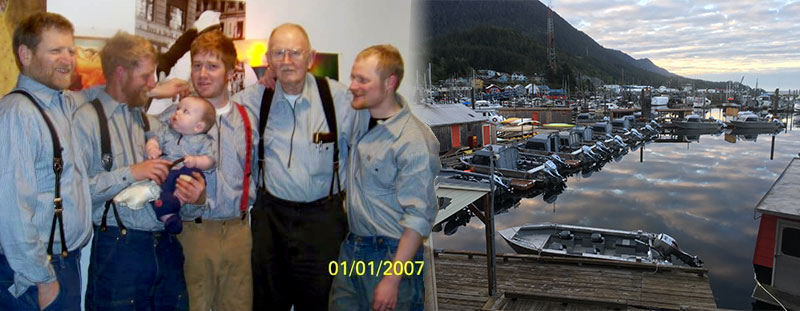
Baranof Fishing Excursions was created with the family wilderness experience in mind. Over the last decade and a half, we’ve taken thousands of parent/child, full family, and multi-generational groups out for a day in the Alaskan wilderness. While we are equipped for, and enjoy, sending out boats full of die-hard fishermen looking to deplete the salmon or bottom fish population as much as possible, our true passion is sharing a first-time experience that so many of our young guests find with us. Jeff Kraynik enjoys the opportunity to provide a memorable Ketchikan fishing excursion and does an amazing job exemplifying Baranof’s family values.
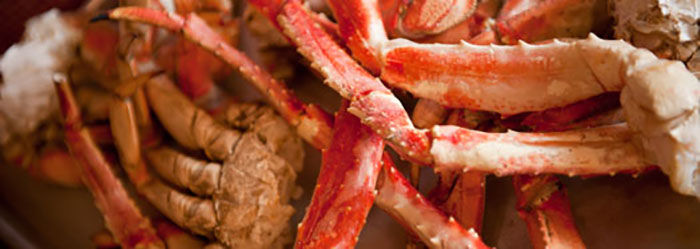
The ability to recognize an opportunity to excel, or exceed customer expectations, is a valuable asset that companies look for in their employees. Latoya demonstrates this innate quality on a daily basis.
Our fresh crab is a popular dish at the Alaska Fish House, though it does take a little effort to eat. Occasionally, Latoya has had call to sit with some customers and open their crab for them. One example, however, stands out as an exceptional portrayal of Latoya’s customer service acumen in the way she handled the situation. A customer approached her, explaining that she was having difficulty with her food. As they approached her table, the customer was basically yelling at her because she couldn’t shell her crab, so Latoya, as she had in times past, volunteered to do it for her. Latoya stood there for the guest’s entire meal opening every piece of crab, even though the customer berated her for the duration. Even though the customer was still irate, Latoya offered her guest more crab on the house, despite the knowledge she’d be opening every piece of that as well. Though the customer refused and left the restaurant, Latoya was able to continue her day with a smile, proud that she had done everything she could to please her customer. She was even congratulated by several other patrons that had seen the situation unfold and commended her for doing an amazing job. One couple put it perfectly when they told Latoya, “You did an awesome job, that was the best display of customer service we’ve ever seen”. Examples like these, and there are many, are why we’re proud to have Latoya Thomas as a leader on the Alaska Fish House team.
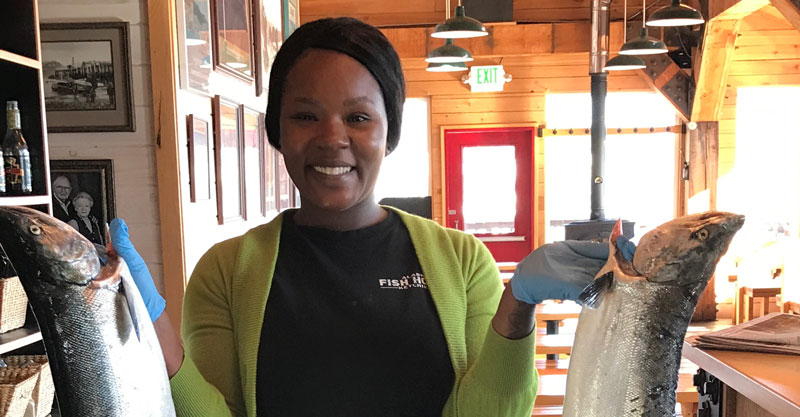
Anyone familiar with Ketchikan knows that the downtown waterfront is dominated by the cruise ship docks. From berth one, adjacent to the Salmon Landing market and Thomas Basin (where our restaurant is located), and stretching down to berth four, pedestrians can find it a difficult hike getting from one end to the other. Although it is a straight shot, the high foot traffic, busy one lane road, and regularly inclement weather can make the journey seem a bit longer than the mile or so that it actually is. Chatting with an elderly couple during their meal, Latoya found that the husband and wife had hoofed it all the way from berth four just to visit the Alaska Fish House. They were tired and not looking forward to the walk back to their ship, so Latoya had one of her servers hop in the van and get them back to their boat while she covered the server’s duties. While we don’t typically offer logistical support to those desiring a meal with us, Latoya recognized an opportunity to exceed expectations and took it.
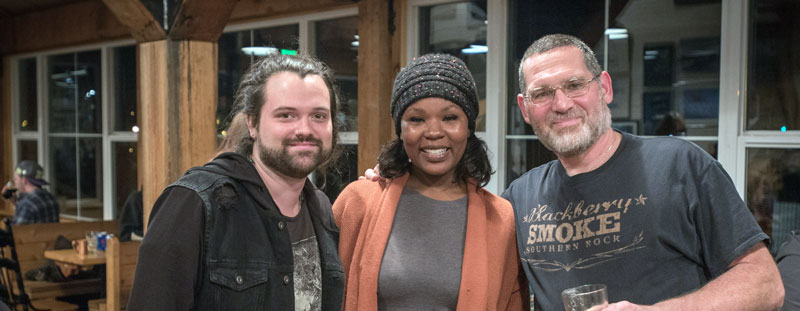
Latoya Thomas, like so many of our summer citizens, came to Alaska on a sort of “working vacation”. Whether drawn north for the job itself, or the opportunity to spend a summer in Alaska without going into the red, a lot of Alaskans came for a visit that ended up lasting years. Originally from Louisiana, Latoya arrived in Ketchikan with years of experience in hospitality and customer service with a desire to “experience something different”, eventually taking a seasonal position at the Alaska Fish House. Now working year-round due to her outstanding work ethic and skill set, you’ll find Latoya down in the trenches during the summer season managing the restaurant floor, and overseeing improvement projects during the off-season.
Every summer, over one million visitors, from all different walks of life, arrive in Ketchikan as they travel through Southeast Alaska. With such a diverse array of guests, those in the service industry end up with quite a few stories by the end of the season. Latoya Thomas has had a couple interactions with our customers that we feel exemplifies perfectly the type of team member we value at the Alaska Fish House. Not one to toot her own horn, we though we’d do it for her.
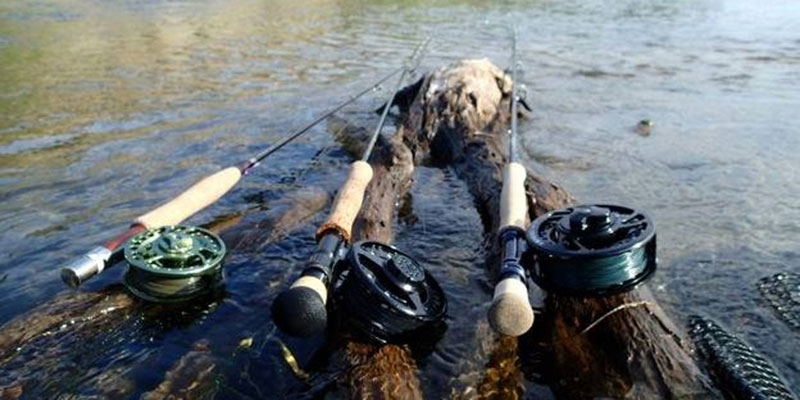
Trips like the one Steve took in 2014 are special. While they are available to anyone with the desire to undertake such a journey, everyone's Alaskan experience is unique. The most common mistake people make when visiting is expecting too little. Alaska is huge, with a world of opportunities for any outdoor enthusiast. Steve wanted to fly fish, so he wore himself out reeling in salmon and trout for a week in the middle of a pristine national park. Identify your own goals, decide what level of comfort is required, and dream big.

Katmai National Park is home to a wonderful cross-section of Alaska wildlife, as well as the sight of the largest volcanic eruption of the 20th century. The park was established in 1918 after the Novarupta eruption, and has remained a popular destination for scientists and tourists for the last 100 years. While Steve didn't visit the Valley of 10,000 Smokes on his trip, it is nonetheless worth reading about if you're unfamiliar. Scotty and Steve were there to fish; as were the bears. Katmai National Park is famous for large salmon runs, which in turn provide brown bears with the nutrients needed for winter. Wherever you find salmon in Alaska, it's a safe bet you'll find bear as well. Due to this, Steve was able to check a couple boxes on his bucket list on this trip, as he spotted his first brown bear, and landed his first sockeye while fly fishing. All told, Steve caught and released 33 sockeye on the fly rod, along with rainbow trout and arctic grayling.

In June of 2014, Steve was stationed at Fort Leavenworth in Kansas. He and his fishing buddy Scotty decided to meet for a fly-fishing trip to the Alaska Peninsula. Steve had already been to Alaska, but this was his first trip to Katmai National Park. Hopping on a jet for the 2,700 mile journey from Kansas City to Anchorage, Steve met Scotty to gather supplies and prepare themselves for a week of fly fishing in the Alaska wilderness. After completing any last-minute outfitting they needed, Scotty and Steve boarded a DeHavilland Beaver seaplane for a flight out to Nonvianuk Lake.
Although the location and motivation change, Scott and Steve lived a vacation common for visitors to Alaska. Over six days, they were dropped off at one location, fished, hiked, and boated to another, and were picked up again by seaplane. For this particular journey, Steve and Scotty were dropped off at Nonvianuk lake, floated and fly fished their way down the Nonvianuk river, through the confluence of the Nonvianuk and Alagnak, and were later picked up via seaplane prior to the Alagnak terminus. Boats and seaplanes are the main modes of transportation in coastal Alaska, and until you head farther north, you're going to have a hard time getting anywhere that doesn't involve one or both of the two.
From the Wheelhouse
Our captain’s report on up-to-date fishing conditions, regulations, and trends.
View Report
Check Back For These Great Upcoming Stories
- Overnight kayaking through the Mistys Fjords
Nothing breaks you into the beauties of the Misty's like a week paddling through her splendor. - SE Alaska 2019 Fishing Regulations
Fishing limits and the Fish & Game’s reasoning, and what it means for Baranof’s guests. - Adventure around Revillagigedo Island
Misty's, Hot Springs, Fishing, Crabbing, and wildlife; the experience of a lifetime.
- February 2024
- April 2023
- June 2022
- March 2021
- February 2021
- March 2020
- February 2020
- January 2020
- December 2019
- October 2019
- August 2019
- June 2019
- April 2019
- February 2019
- January 2019
- November 2018
- October 2018
- September 2018
- June 2018
- May 2018
- April 2018
- March 2018
- February 2018
- January 2018
- December 2017
- November 2017
- September 2017
- August 2017
- July 2017
- June 2017
- May 2017
- April 2017
- March 2017
- February 2017
- January 2017